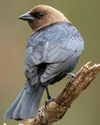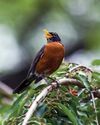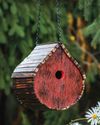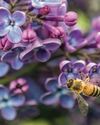
Think about the last time you saw a northern oriole or rufous-sided towhee. Technically, nobody has seen either of these birds for 25 years. That’s because in 1995, these species were reclassified by a committee of the American Ornithologists’ Union, which has been the keeper of the Checklist of North and Middle American Birds since 1886. Now northern orioles are classified as Bullock’s in the West and Baltimore orioles in the East. Similarly, rufous-sided towhees were also split into two species: the spotted towhee in the West and the eastern towhee east of the Great Plains.
These changes aren’t simply taxonomic trickery. Instead, when making these decisions, the committee weighs evidence including plumage variations, differences in songs, DNA, and the amount of hybridization between closely related species.
While many birders celebrate the splits because they can add species to their life lists, the committee is more concerned with getting the science correct. According to birding expert Kenn Kaufman, “The committee doesn’t make changes without a specific reason.”
This story is from the October/November 2020 edition of Birds & Blooms.
Start your 7-day Magzter GOLD free trial to access thousands of curated premium stories, and 8,500+ magazines and newspapers.
Already a subscriber ? Sign In
This story is from the October/November 2020 edition of Birds & Blooms.
Start your 7-day Magzter GOLD free trial to access thousands of curated premium stories, and 8,500+ magazines and newspapers.
Already a subscriber? Sign In

Clever Cowbirds
Learn more about these birds that are infamous for letting others raise their young

Ask the Experts
Pros offer spring plant care tips and tough IDs

Rustic diy Birdhouse
Whether you're hardcore handy or an everyonce-in-a-while crafty person, you probably have a small pile of scrap wood handy. Grab your tools and turn your extra materials into any house wren's dream nest box.

THE LATEST IN Lilacs
Learn about updated varieties of this timeless classic and how to take care of them

Meet the ORIOLES
GET TO KNOW eight TYPES SEEN THROUGHOUT THE U.S. AND WHAT MAKES EACH ONE STAND OUT

CBD FOR YOUR PAIN
Everyone feels the hurt as you age, but CBD can help you deal with it

Welcome, New Blooms
Update your yard with 2024's freshest florals

Western Blues
Beckon these regional bluebirds to your yard with nest boxes and mealworms

Incredible Eggs
Fun facts about these tough yet fragile wonders

Life Well Lived
Surprising facts about bird life spans